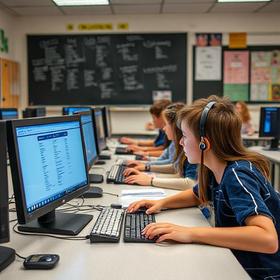The percentage of students achieving proficiency in math is <50% (which is higher than the Minnesota state average of 46%).
Quick Facts (2025-26)
- School Type: Alternative school
- Grades: 10-12
- Math Proficiency: <50% (Top 50% in MN)
- Source: National Center for Education Statistics (NCES), MN Dept. of Education
School Overview
School Type
Grades Offered
Grades 10-12
(No virtual instruction)
(No virtual instruction)
Total Students (15-16)
4 students
Total Classroom Teachers (22-23)
1 teacher
School Rankings
Math Test Scores (% Proficient)
<50%
46%
Student-Teacher Ratio
n/a
13:1
American Indian
(15-16)n/a
2%
Asian
(15-16)n/a
7%
Hispanic
(15-16)n/a
9%
Black
(15-16)n/a
10%
White
(15-16)100%
68%
Hawaiian
(15-16)n/a
n/a
Two or more races
(15-16)n/a
4%
School Statewide Testing
School District Name
Source: National Center for Education Statistics (NCES), MN Dept. of Education
Frequently Asked Questions
How many students attend Pierz Alternative Program?
4 students attend Pierz Alternative Program.
What is the racial composition of the student body?
100% of Pierz Alternative Program students are White.
What grades does Pierz Alternative Program offer ?
Pierz Alternative Program offers enrollment in grades 10-12 (No virtual instruction).
What school district is Pierz Alternative Program part of?
Pierz Alternative Program is part of Pierz Public School District.
School Reviews
Review Pierz Alternative Program. Reviews should be a few sentences in length. Please include any comments on:
- Quality of academic programs, teachers, and facilities
- Availability of music, art, sports and other extracurricular activities
Recent Articles

Cybersecurity in U.S. Public Schools 2025: Risks, Policies & Protection
Explore the 2025 state of cybersecurity in U.S. public schools, updated data, expert insights, policy moves, and how schools and families can stay safe.

The Rise of STEM in Public Schools: 2025 Update
Explore how STEM is transforming U.S. public schools in 2025鈥攖rends, policies, programs, and what parents and educators should know.

How Public Schools Support Mental Health in 2025
Explore how U.S. public schools are supporting student mental health in 2025鈥攑rograms, results, challenges and strategies for educators, parents and policymakers.





